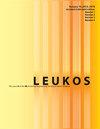An Approach for Determining an Index for Lightness-Darkness Attribute of Shadows in Artificial Lit Spaces
IF 2.6
2区 工程技术
Q2 CONSTRUCTION & BUILDING TECHNOLOGY
引用次数: 0
Abstract
ABSTRACT Shadows, modelling, and directional lighting are lighting criteria which are closely related with each other. Shadows have two attributes, namely harshness-softness and lightness-darkness. Both attributes can be examined in two respects that is self-shadow and cast-shadow. A shadow with sharp edges is harsh shadow, while a shadow with blurred edges is soft shadow. The size of the luminaire determines whether the edges of a shadow are sharp or blur. The contrast between the illuminated and the shaded areas determines the lightness-darkness of shadows. If this contrast is weak the shadow is perceived as light, while a strong contrast causes the shadow to be perceived as dark. The observer is often unable to distinguish the effects of two different shadow attributes from each other and judges the appearance of objects or faces as a whole as pleasant or not. However, the two properties of shadows can be defined independently from each other and considered separately as lighting design criteria. Directional lighting is used when the texture and shape of objects or people are to be revealed or emphasized. Finally, it can be said that modelling describes the general appearance of objects and people and involves both the shadow properties and the effects of directional lighting. The aim of this study is to define an index with regard to the lightness-darkness attribute of shadows. The approach developed in this respect is applied for both cast- and self-shadows. The acceptable limits for both indexes are determined based on the main types of luminaires that are often installed in a room. The introduced lightness-darkness indexes with their limit values can be considered as lighting design criteria.人工照明空间中阴影明暗属性指数的确定方法
阴影、造型和方向照明是密切相关的照明标准。阴影有两个属性,即粗糙-柔软和明亮-黑暗。这两个属性都可以从自影和投射影两个方面来考察。边缘锐利的阴影为粗影,边缘模糊的阴影为柔影。灯具的大小决定了阴影的边缘是锐利还是模糊。光照区域和阴影区域之间的对比决定了阴影的明暗。如果这种对比很弱,阴影就会被认为是光,而强烈的对比会让阴影被认为是暗。观察者通常无法区分两种不同阴影属性的效果,并判断物体或面孔的整体外观是否令人愉快。然而,阴影的两个属性可以彼此独立地定义,并作为照明设计标准单独考虑。当要显示或强调物体或人物的纹理和形状时,使用定向照明。最后,可以说,建模描述了物体和人的一般外观,包括阴影属性和定向照明的效果。本研究的目的是定义一个关于阴影明暗属性的指数。在这方面发展的方法适用于投射阴影和自阴影。这两项指标的可接受限值是根据房间中经常安装的主要灯具类型确定的。引入的明暗指数及其极限值可作为照明设计准则。
本文章由计算机程序翻译,如有差异,请以英文原文为准。
求助全文
约1分钟内获得全文
求助全文
来源期刊

Leukos
工程技术-光学
CiteScore
7.60
自引率
5.60%
发文量
19
审稿时长
>12 weeks
期刊介绍:
The Illuminating Engineering Society of North America and our publisher Taylor & Francis make every effort to ensure the accuracy of all the information (the "Content") contained in our publications. However, The Illuminating Engineering Society of North America and our publisher Taylor & Francis, our agents, and our licensors make no representations or warranties whatsoever as to the accuracy, completeness, or suitability for any purpose of the Content. Any opinions and views expressed in this publication are the opinions and views of the authors, and are not the views of or endorsed by The Illuminating Engineering Society of North America and our publisher Taylor & Francis. The accuracy of the Content should not be relied upon and should be independently verified with primary sources of information. The Illuminating Engineering Society of North America and our publisher Taylor & Francis shall not be liable for any losses, actions, claims, proceedings, demands, costs, expenses, damages, and other liabilities whatsoever or howsoever caused arising directly or indirectly in connection with, in relation to, or arising out of the use of the Content. Terms & Conditions of access and use can be found at http://www.tandfonline.com/page/terms-and-conditions .
 求助内容:
求助内容: 应助结果提醒方式:
应助结果提醒方式:


